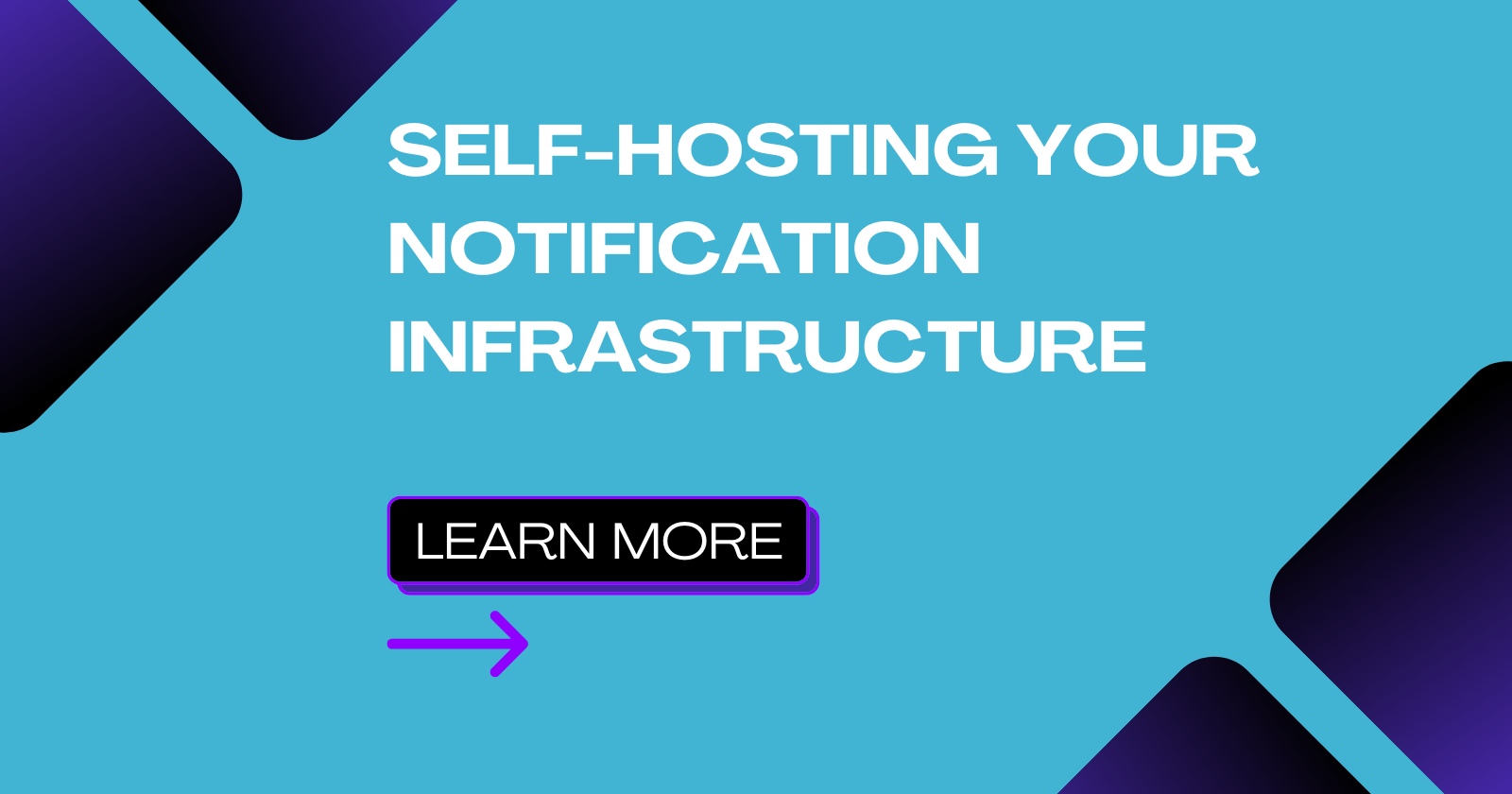Why You Should Consider Self-Hosting Your Notification Infrastructure (And How to Do It in Minutes)
 Youssef Siam
Youssef SiamTable of contents
- The Real Talk About Notification Systems
- Why Self-Hosting Makes Technical Sense
- The Technical Stack You Actually Need
- Enter Open Source: The Novu Approach
- The "Too Technical to Be True" Part (But It Is)
- Real Technical Benefits
- The 5-Minute Deployment Reality
- Ready to Take Control of Your Notification Infrastructure?
- Final Thoughts

Ever wondered how companies like Slack or Discord manage their complex notification systems? While they've built their solutions from scratch, you don't have to. Let's dive into why self-hosting your notification infrastructure might be the game-changer you didn't know you needed.
The Real Talk About Notification Systems
If you're building modern applications, you're probably familiar with this scenario: Your app starts small, using a simple email service. Then you add SMS. Then push notifications. Before you know it, you're juggling multiple providers, dealing with different APIs, and watching your notification costs grow with your success.
Why Self-Hosting Makes Technical Sense
Here's what most developers don't realize: setting up your own notification infrastructure isn't just about cost savings. It's about:
Technical Control:
Full access to your notification logic
Custom retry mechanisms
Direct database access for analytics
No black-box behavior
Data Ownership:
Keep sensitive notification data in your infrastructure
Compliance with data regulations
No third-party data processing concerns
Developer Experience:
Single API for all channels
Type-safe operations
Custom integration capabilities
Real-time debugging
The Technical Stack You Actually Need
A proper notification system requires several components:
├── Message Queue
├── Template Engine
├── Provider Integrations
├── Delivery Tracking
├── User Preferences
└── Analytics
Sounds complex? It used to be. But here's where it gets interesting.
Enter Open Source: The Novu Approach
Novu provides all these components in a unified, open-source package. Here's what the architecture looks like:
Core Components
// Simple notification trigger
await novu.trigger('workflow-name', {
to: {
subscriberId: 'user-id',
email: 'user@example.com'
},
payload: {
title: 'Deploy Successful',
message: 'Your application is now live'
}
});
This single API call can:
Send multi-channel notifications
Handle retry logic
Manage user preferences
Track delivery status
Provide real-time updates
The "Too Technical to Be True" Part (But It Is)
Remember when setting up Redis and MongoDB for a notification system would take days? Now it's automated. SSL certificates? Automated. API endpoints? Generated instantly.
Real Technical Benefits
Scalability:
Horizontal scaling capability
Built-in rate limiting
Queue management
Load balancing
Development Workflow:
Version-controlled templates
CI/CD integration
Environment separation
Staging capabilities
Monitoring:
Full access to logs
Custom metrics
Performance tracking
Error tracing
The 5-Minute Deployment Reality
While traditionally setting up such infrastructure would require significant DevOps work, using modern deployment platforms, you can have a production-ready instance running in minutes.
Here's what gets automated:
Database provisioning
Redis setup
SSL/TLS configuration
API endpoints
Web dashboard deployment
Ready to Take Control of Your Notification Infrastructure?
If you're interested in trying this out, I've created a template that automates the entire setup process. You can deploy your own instance with a single click: Deploy on Railway (affiliate link - transparency matters! 😉)
Final Thoughts
Self-hosting your notification infrastructure isn't just about saving costs or having control - it's about building a more robust, scalable, and maintainable system. Whether you're handling hundreds or millions of notifications, having the right infrastructure makes all the difference.
The best part? You can try it out without committing to anything major. Deploy a test instance, play around with it, and see if it fits your needs. Your future self (and your DevOps team) will thank you.
Subscribe to my newsletter
Read articles from Youssef Siam directly inside your inbox. Subscribe to the newsletter, and don't miss out.
Written by

Youssef Siam
Youssef Siam
Software Engineer @kwentra